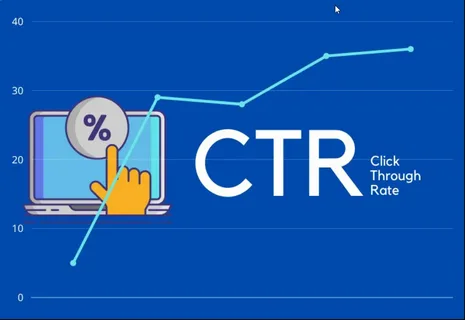When it comes to advertising on Google Ads, achieving a high click-through rate (CTR) can make or break your campaign. CTR is a critical metric that shows how often people click on your ad after seeing it. The higher your CTR, the more effective your ad is at drawing attention—and ultimately, driving business results. However, boosting CTR requires more than just eye-catching visuals and punchy headlines. It takes strategic targeting, optimized ad copy, and a bit of trial and error.

12 ways to improve your click-through rate in Google Ads isn’t just about getting more clicks; it’s about creating a strong, trustworthy presence online, which ties directly into building a positive reputation and driving more traffic from other Google tools. For example, increasing Google Reviews is a fantastic way to build credibility. When people see high ratings and positive reviews associated with your business, they’re more likely to click on your ad and trust your brand.
Similarly, optimizing your Google Business Profile helps your business stand out in local searches, attracting more customers and ultimately increasing clicks on your Google Ads. When all these elements—targeted ads, positive reviews, and an optimized business profile—work together, they build a powerful online presence that draws in more clicks, traffic, and customers.
In this guide, we’ll go through 12 ways to improve your click-through rate in Google Ads to help you get the most out of your ad spend and elevate your digital marketing performance.
What Is Click-Through Rate in Google Ads?

Click-through rate (CTR) is the percentage of people who click on your ad after it appears on the Search Engine Results Page (SERP). To calculate CTR, divide the number of clicks by the number of impressions, then multiply by 100. For example, if your ad gets 10 clicks out of 100 impressions, your CTR is 10%.
A strong CTR suggests that your ad is both relevant and appealing to your target audience. But improving CTR isn’t just about getting clicks—those clicks should be from the right people to make your ad spend worthwhile.
Why CTR Matters in Google Ads
CTR has a direct impact on your Google Ads Quality Score, which in turn influences your Ad Rank and cost per click (CPC). Higher CTRs generally result in:
- Better ad positions on the search page
- Lower CPCs due to a better Quality Score
- More cost-effective ad campaigns
Google rewards advertisers whose ads are likely to get clicks by positioning them higher and charging them less per click. However, too high of a CTR without conversions can drain your budget, so the aim should be to achieve a high, qualified CTR.
How to Set Your Target CTR
The average CTR for Google Ads varies by industry, but a general benchmark is 2-6% for search ads. Some sectors, like travel and automotive, may have higher average CTRs (around 7-9%). But an “above-average” CTR for most industries typically means hitting 7% or more.
Setting a target CTR helps ensure your campaigns are effective, but remember to focus on qualified clicks that drive conversions. Now, let’s dive into 12 ways to improve your click-through rate in Google Ads.
12 Ways To Improve Your Click-Through Rate in Google Ads
1. Target the Right Keywords
Your keywords form the backbone of your campaign’s success. Choose high-intent keywords that match the user’s search intent:
- Commercial Intent Keywords: Target keywords that indicate a buying mindset, like “best CRM software” or “affordable marketing automation tools.” Avoid purely informational terms (like “what is CRM”) as they tend to attract browsers rather than buyers.
- Branded Keywords: Bidding on branded terms, both your own and relevant competitors, can drive more clicks from users with intent to purchase.
- Local Keywords: Local keywords, such as “New York real estate agents,” can help you reach high-intent, local customers.
2. Use Negative Keywords
Negative keywords are crucial for filtering out unqualified clicks. By excluding keywords that don’t align with your product or service, you can prevent your ad from showing to users unlikely to click or convert. For instance, if you sell new electronics, you might want to exclude terms like “used” or “refurbished” to avoid irrelevant traffic.
3. Narrow Your Audience Targeting
Refining your audience targeting can dramatically increase CTR. Instead of targeting broad audiences, narrow it down by demographics, interests, and behaviors to reach a more qualified audience.
Consider segmenting by:
- Demographics: Age, gender, income level, etc.
- Location: Only display your ad in regions where you operate.
- Interests and Habits: Customize ads to reach people with interests relevant to your product or service.
This refined targeting helps your ad resonate with those most likely to click and convert.
4. Keep Ads Simple and Skimmable
Most people don’t read ads word-for-word. Craft simple, skimmable ads with clear, concise messaging:
- Include primary keywords in the headline and description without overloading the text.
- Avoid unnecessary abbreviations and jargon.
- Use readable language to communicate the message at a glance.
This simplicity makes it easier for users to immediately understand what your ad offers, increasing the chance of a click.
5. Use a Strong Call to Action (CTA)
A clear, compelling CTA motivates users to take action. Simply stating features isn’t enough; use action-oriented language that prompts an immediate response. Rather than just describing what you offer, use action-oriented phrases like:
- “Shop Now”
- “Get Your Free Trial”
- “Discover More Today”
These CTAs prompt users to engage immediately, giving them a nudge that can increase your CTR.
6. Include Special Offers in Your Headline
People are naturally drawn to special offers. Promoting discounts or free trials in your ad headlines captures attention and can boost CTR. Use numbers in the headline for added appeal, such as “Save 20% Today” or “Free Shipping on All Orders.”
7. Use Keywords in the Display Path
Display paths are customizable sections of your URL that appear in the ad. Including keywords in the display path reassures searchers that your ad is directly related to their query. For example, a display path like www.yoursite.com/best-CRM for the keyword “best CRM” can strengthen relevancy and increase clicks.
8. Create Emotionally Compelling Ads
Emotional appeals can make your ad copy more memorable and relatable. Use language that resonates with your target audience on an emotional level. Subtle, benefit-driven phrases like “boost your career” or “achieve your dreams” add an extra layer of motivation.
9. Leverage Dynamic Keyword Insertion (DKI)
Dynamic Keyword Insertion (DKI) lets Google automatically insert the search term into your ad text. This technique can improve CTR by making your ads appear more relevant. However, avoid overusing it, as it can sometimes lead to awkward or overly repetitive phrasing.
10. Utilize Ad Extensions Effectively
Ad extensions enhance your ad by adding extra information, such as phone numbers, site links, or specific offers. These additions can make your ad more appealing and clickable. However, use extensions thoughtfully—overloading an ad with information can overwhelm users and decrease engagement.
11. Test Multiple Ad Variants
Regular testing is key to finding the best-performing ads. Create multiple versions with varying headlines, descriptions, and CTAs. For example, try two different CTAs like “Sign Up Now” and “Get Started Today” to see which resonates more. Testing helps you understand what drives higher CTRs so you can optimize your campaigns over time.
12. Remove Low-Performing Ads
Low-performing ads can drag down your account’s overall effectiveness. Periodically review and pause ads with low CTRs or Quality Scores. By reallocating budget to high-performing ads, you can improve your campaign’s average CTR, reduce costs, and increase conversions.
Conclusion and Key Takeaways
Improving your Google Ads CTR is a powerful way to maximize your ad spend and reach potential customers more effectively. By following these 12 ways to improve your click-through rate in Google Ads, from refining your keywords to crafting compelling ad copy, you can create ads that capture attention and drive action. Remember, the goal isn’t just to get clicks but to attract relevant clicks that lead to conversions. By combining these tactics with regular testing and optimization, you’ll build a more effective, high-performing Google Ads campaign.



